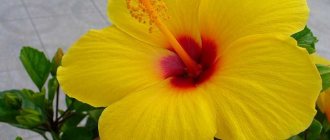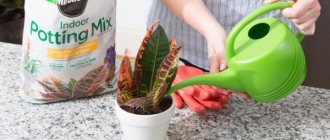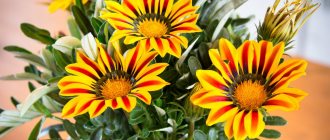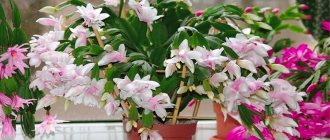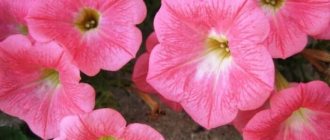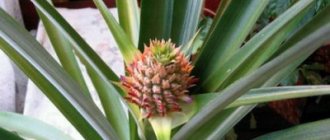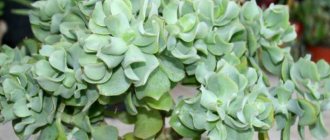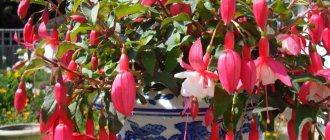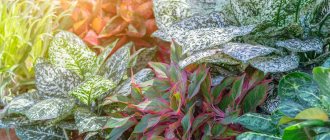Alstroemeria is a flower that is a common inhabitant of greenhouses. Many plants are grown for their beautiful and long-lasting cut. In a bouquet, it is a wonderful companion for luxurious roses or royal lilies, highlighting their lush beauty. And alstroemeria itself is so decorative that it can easily do without other flowers.
Many gardeners want to tame this curiosity and plant it in their garden. This is quite possible if you surround the flower with proper care and attention.
Description of Alstroemeria
The representative of the Alstroemeria family received such an unusual name from Carl Linnaeus. He grew it from seeds brought from Spain and described it, immortalizing in the name the name of his student, Claes Alströmer, who brought them. The flower came to Europe from South America, thanks to the conquistadors. Alstroemeria's habitat covers the entire continent. Natural growing conditions are different:
- tropical Brazilian forests;
- the world's driest Atacama Desert;
- highlands of the Andes.
This perennial herbaceous plant has a number of features that are characteristic of representatives of this family, but rarely found in other plants:
- flexible, straight stems without branching, the height of which depends on the species, are covered with leaves unevenly - closest to the peduncle;
- alternate leaves have an elongated linear shape; due to the twisting of the petioles by 180 degrees, they are turned upside down, this phenomenon is called resulination by botanists;
- alstroemeria roots are juicy, spindle-shaped, contain a lot of starch;
- flowers up to 5 cm in diameter are collected in an inflorescence - a corymb, there can be up to 25 pieces;
- stamen filaments number 6 form 2 circles, the lower ovary ends in a three-lobed stigma;
- the box containing the seeds opens completely, scattering the contents far.
The ability of a plant to distribute seeds without intermediaries is called autochory.
Flowers are why the “Peruvian lily” was introduced into culture and is grown en masse. Let us dwell on them in more detail in the description of alstroemeria. Its flower consists of two corollas, as if inserted into each other. The 3 inner petals are narrow, pointed, they are covered with dark lines, the size of which increases from the base to the edges, and the density decreases. The outer corolla, often of a different color, consists of 3 wide petals, shaped like a heart. The color is very diverse: white, pink, red, purple, yellow in various combinations. It is not uncommon to have a darker border along the edge of the petals.
Alstroemeria blooms in spring and summer, but good care will allow you to admire this beauty in September. Zygomorphic - with a single axis of symmetry, the shape of the flower is due to difficulties with its accessibility to pollinators - insects or hummingbirds.
Alstroemeria in history
Alstroemeria, or Peruvian lily, lily of the Incas, as Europeans initially called this amazing plant, became the most popular flower crop in the world in the second half of the 18th century. At first, Sweden was “conquered” by the beauty and grace of this flower, then the “tulip paradise” was Holland and England.
Alstroemeria varieties 1 - Gold, 2 - Whistler
Now it is grown even in such distant countries as Kenya and Japan. But most species of this plant are still common in its homeland, South America.
Alstroemeria varieties 1 - Revolution, 2 - Record
Alstroemeria: types and varieties
The genus of Alstroemeria is numerous, according to various sources there are from 50 to 100 species in it.
- Golden - found in Chile in wet meadows, orange flowers, yellow center;
- Brazilian - the highest of all natural species - up to 2 m, inflorescences consist of 30 orange or brown flowers;
- Campanulate - an inhabitant of tropical forests;
- Herbaceous and multi-leafed - both species grow in the Atacama Desert;
- Bloodflower - has a fleshy rhizome, the number of dull red or orange flowers is up to 15 with a stem height of up to 1 m, comes from Chile;
- Ligtu - grows in the mountains of Chile, is cold-resistant, the height of the stems is up to 90 cm, they are covered with narrow leaves, the flowers are pink with a yellow center;
- Dwarf - an unusual species from Patagonia, only 8 cm high, capable of growing on pebbles, bears only one flower;
- Snezhnaya is an inhabitant of the mountains of Peru and Bolivia, where it has mastered altitudes of up to 4000 m;
- Pretty - tuberous roots and branched stems with pink-yellow flowers, grows in Brazil.
Alstroemeria golden
Alstroemeria bloodflower
Alstroemeria Snow
These and other species became the basis for selection, thanks to which more than 20 hybrid series were developed. Representatives of the following groups are most often grown:
- Dr Salter – the inflorescences are compact, well open, a distinctive feature is stripes on the upper inner petals;
- Ligtu - a series created with the participation of the wild species of the same name, blood-flowered alstroemeria and golden hybrids in England a hundred years ago; after flowering the bushes die;
- Hybrids of Dutch origin are distinguished by wide petals and double color.
Varieties of hybrid lines:
- Virginia is one of the most common varieties with white coloring and dark stripes on the upper two inner petals;
- Alicia - light pink petals have a darker edge and cherry-colored stripes;
- Dynasty - the whole flower is soft lilac, the stripes are brown;
- Yellow crown - cheerful yellow color diluted with brown stripes;
- Climax - bright flowers with a soft yellow color and a wide red border, the stripes are barely noticeable;
- Lovely - deep red color diluted with small light stripes on the two upper inner petals, few dark stripes;
- Orissa Lil - rich lilac color and two light spots at the base of the upper petals, wide, dark stripes;
- Panorama - in the center of each pink petal there is a darker spot, a large number of stripes;
- Floriana - lilac petals end in a dark spot, the two upper inner petals have a white center, no stripes.
- Monte Servino - deep cherry color of the petals, wide stripes and two small light pink spots make the flower very expressive.
Alstroemeria Virginia
Alstroemeria Monte Servino
Alstroemeria Yellow Crown
The varietal diversity of alstroemeria is great; most often these flowers are grown in greenhouses. Planting and caring for alstroemeria in open ground has its own characteristics. In order for the plant to bloom successfully in the flowerbed, you will have to grow seedlings.
Alstroemeria, history of discovery
Alstroemeria is a plant native to such South American countries as Chile and Peru. Currently, these flowers in their homeland grow along the roadsides, just like our dandelions. And during the ancient civilization of the legendary Incas Indians, this flower was revered as a gift from the supreme sun god Inti.
During the exploration of the American continent by the Spaniards, the plant came from the land of the Incas to Spain and grew there without attracting much attention to itself. This was the case until the Swedish scientist and entrepreneur Claes Alströmer set off on a voyage across Europe in 1760, during which he visited Spain. The young Swede's interests included:
- chemistry
- botany
- zoology
The scientist spent a lot of time studying plants in private collections and greenhouses. Traveling around Europe, Klas did not stop observing the world around him. In Spain, he discovered a bright flower that was previously unknown to him. Since the Swede was a student and close friend of the taxonomist Carl Linnaeus, it is natural that he sent the discovered flower to him.
In 1762, K. Linnaeus described the sent samples and attributed them to a separate family, which he named Alstroemeria in honor of his student, and the species itself Alstroemeria; in total, the family includes about 50 species. Alstroemeria instantly won the love of Europeans and began to be grown, first in greenhouses, and then in the open air. Let's try to figure out why this plant is so popular.
Alstroemeria: growing through seedlings
The seed method of propagating alstroemeria is most often used. Such plants will not bloom during the planting season, but only after two or three years.
The end of February–beginning of March is the best time for sowing.
Advice! Alstroemeria seeds that will be grown in open ground need stratification.
For this, the seed is kept in a damp cloth on the bottom shelf of the refrigerator for about a month. It is better to grow alstroemeria without picking, sowing the seeds in separate containers. The soil for it is prepared from a mixture of turf soil and leaf humus in a ratio of 1:3. To make the soil reaction acidic, add a small amount of fibrous peat, and to make it looser, add coarse sand. A stratified seed is placed in each container with drainage at the bottom and covered with a 1 cm layer of soil. Crops require greenhouse conditions - a plastic bag is placed over the container. Before germination, maintain a temperature of 18 degrees.
After 3 weeks, and sometimes even after a month, sprouts will appear.
Advice! Stratification can be carried out after sowing, keeping the containers in the refrigerator for a month.
The containers need to be ventilated daily, and the soil should be moistened if necessary. The package is removed when shoots appear.
Caring for alstroemeria at the stage of growing seedlings:
- temperature - from 20 to 25 degrees;
- full lighting for 12 hours, if necessary - additional lighting;
- moderate watering;
- 2-3 feedings, the first with a solution of mullein diluted 1:20 when the first true leaf appears, the second with a weak solution of complete mineral fertilizer (3 g of ammonium nitrate and potassium sulfate and 6 g of superphosphate per 2 liters of water) - in the phase of the third leaf, third - after 3 weeks with the same solution;
- hardening a couple of weeks before planting, they are gradually accustomed to fresh air.
If alstroemeria grew in one container, dive them into separate pots or cups when the third leaf appears.
Planting alstroemeria in open ground
Alstroemeria is heat-loving, so you can’t rush to plant plants in the flower garden.
Deadlines
The timing of planting alstroemeria in open ground depends on the place where it is grown. For plants to take root well, the following conditions are needed:
- soil temperature not less than 20 degrees;
- persistent warm weather;
- end of return frosts.
In most regions, such conditions develop at the end of May, and in some places at the beginning of June.
Landing rules
For alstroemeria, choose a place where there are no drafts and cold winds with direct sunlight in the morning or after 4 o'clock in the afternoon.
Advice! Alstroemeria feels best in lace shade.
The soil selected is nutritious, loose, with a slightly acidic or neutral reaction.
Landing rules:
- the step between planting holes depends on the height of the plant - from 30 to 50 cm;
- the depth of the hole is 30 cm, and the width is from 30 to 50 cm, the roots should fit in it freely;
- drainage is arranged at the bottom;
- a layer of well-rotted compost 8 cm thick is placed on the drainage;
- transplantation is carried out by transshipment, filling the hole with fertile soil;
- the soil is compacted and watered.
At first, it is better to shade the plants by covering them with spunbond.
Alstroemeria symbolism
Bright alstroemerias are endowed with deep symbolism hidden behind delicate petals. This tropical beauty means:
- Devotion and mutual support between relatives or friends
- Strong friendship love;
- Courage;
- Wishes of success and wealth;
- Steady pursuit of the goal.
Because the flower was discovered relatively recently, it is not mentioned in the classical Victorian tradition of the language of flowers. However, modern flower lovers endow the beautiful alstroemeria flowers with a rich range of meanings. It mainly symbolizes friendship and deep relationships between two people. They say that a bouquet of alstroemeria can even help you find true friends.
Thanks to the richness of shades, a bouquet of Peruvian lilies can convey a variety of messages:
- Yellow - symbolizes wealth and luck;
- Orange - success in achieving your goal and congratulations on conquering new heights;
- White - tenderness and joy of the holiday;
- Red - passionate feelings;
- Pink - romance and love;
- Purple - deep feelings and mystery.
The flower can be given either in mono bouquets or in addition to other flowers. Alstroemeria goes best with roses, chrysanthemums, irises and lisianthus.
Alstroemeria care
Growing alstroemeria is not very difficult: regular watering and fertilizing will be required. The plant has one feature that is unique to it: when the soil overheats above 23 degrees, it responds by developing roots to the detriment of flowering.
Advice! Mulching with tree bark or peat with a layer of at least 7 cm will prevent overheating.
Watering
Alstroemeria requires systematic but moderate soil moisture. The soil should not dry out. During drought they water more often - twice a week; during rain they use natural moisture.
Feeding
Plants require nutrition regularly. Fertilizing is carried out every ten days, alternating mineral and organic fertilizers. At the stage of increasing leaf mass, emphasis is placed on nitrogen-containing nutrition. During the period of budding and flowering, alstroemeria's need for phosphorus increases. Potassium should be supplied to plants in the form of wood ash. It is embedded in the soil under the bushes 3-4 times per season.
Transfer
Alstroemeria roots grow quickly, dense bushes with many shoots bloom poorly. Every year in spring or autumn, an adult plant is replanted, combining this procedure with dividing the bush. The rules for planting divided alstroemeria are the same as when planting seedlings. Holes are dug in proportion to the root system.
Advice! In order for alstroemeria to bloom magnificently, the flower stalks are cut off without waiting for the petals to fall, and the bushes are thinned out, cutting out weak and deformed shoots.
Diseases and parasites
You can fight diseases and parasites with the help of drugs
Alstroemeria is resistant to both parasites and diseases, but with proper care. If you water it too much, it may develop gray mold. Its distinctive characteristic is the appearance of a fluffy coating. Immediately after the appearance of such a problem, alstroemeria needs to be treated: the affected parts are removed, and healthy parts are sprayed with a fungicidal preparation. If the plant is too severely affected, it is better to dig it up and destroy it in order to protect the bushes growing nearby.
If the bushes are not taken care of, spider mites and caterpillars may appear and quickly destroy them. To get rid of it you will have to use acaricides and insecticides.
Important! To protect against slugs, which like to eat leaves, it is worth filling the soil around the plant with tree bark in advance.
Astramerias, or alstroemerias, attract with their beauty: they can decorate the garden all summer or be used for bouquets that can be placed in a vase. Bridal bouquets made from alstroemerias and violets also look good. They will bloom every year without requiring special care: it is enough to feed them on time, water them and monitor the condition of the soil, as well as protect them from parasites.
Alstroemeria propagation
For this plant, both vegetative and seed propagation is possible.
Seeds
Alstroemeria seeds remain viable for a long time - up to 3 years. If they are collected from their own plants, then the likelihood of repeating the parental varietal characteristics is low. But this does not make the flowering bushes less decorative. In this way, new varieties can be obtained. Seed propagation is described in detail in the section on growing seedlings.
By dividing the rhizome
This method guarantees alstroemeria flowering in the year of planting or the next year with autumn division. It retains varietal characteristics 100%.
It is better to divide the rhizomes in the fall after flowering, so that the planted plants have time to take root before frost. Each division must have at least 6 dormant buds. The bush is cut into pieces with a sharp knife. The sections are powdered with colloidal sulfur or carbon powder. Immediately plant the plants in the prepared beds.
In the spring, you don’t have to dig up the bush, but carefully separate the tubers.
Wintering
Wintering in open ground is the hardest time for a flower. The roots can tolerate only slight freezing of the soil. But alstroemeria can be helped to survive the winter. To do this, do the following:
- when the first frosts pass, all shoots are cut off, leaving only small stumps;
- pour a thick layer of fallen leaves on the bushes;
- cover with film on top;
- A mixture of humus and garden soil is spread on it in a thick layer.
Advice! All covering operations are carried out in dry weather; it is desirable that the top layer of soil is dry.
If the winters are harsh, it is better not to risk it, but to dig up the bushes and replant them in boxes, placing them in a frost-free basement.
